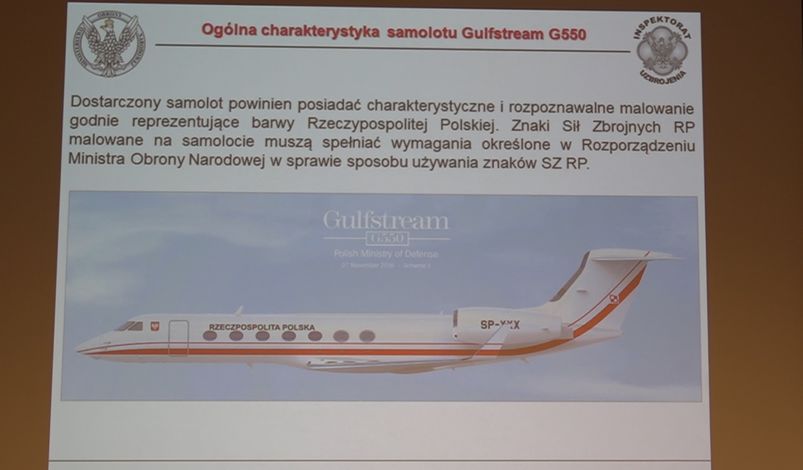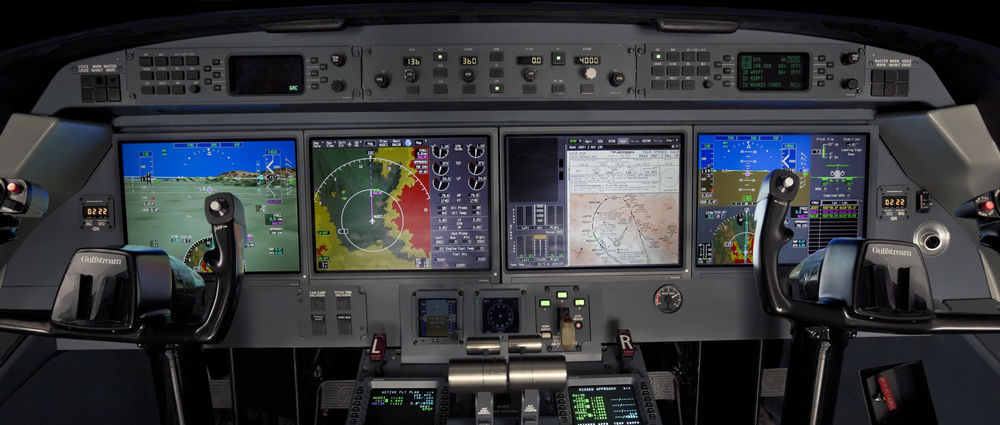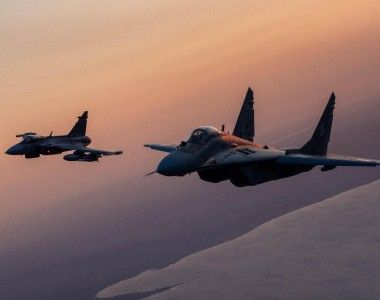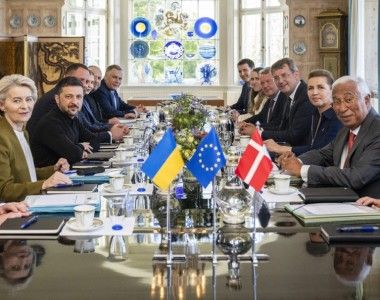New VIP Aircraft and New VIP Transport Procedures? [Analysis]
The situation related to organization and reorganization of the flight of the Polish delegates from the UK, yet again fueled a discussion, related to the procedures adopted for the purpose of transporting the VIPs. Procurement of the new aircraft may pose a chance to stabilize the emerging framework, and make the situation better. Nonetheless, it is undoubtedly required to make the existing procedures more precise.
The incident which we could have witnessed in Luton, near London, at the airport from which the Polish delegates were to fly back to Warsaw, onboard the Embraer 175 and C295M aircraft, became a pretext to get back to discussion, related to the habit of following the safety procedures during the so called HEAD flights. In this case, as it may seem, the legal regulations were not breached, however many rules were broken, when it comes to the safety requirements and the flight organization process.
According to the reports published by the journalists, an ad hoc decision has been made, to make an attempt to transfer some of the passengers that were assigned to travel onboard the C295M aircraft to the government’s Embraer 175. It was said that the organizer of the delegation had not announced his intentions in advance, neither was such information received by the crew, nor by the maintenance staff. The organizer also did not make any steps towards checking whether option as such even exists.
Meanwhile, the higher number of passengers onboard led to a wrong weight distribution within the aircraft, which could potentially have caused a threat. In the light of the aforesaid circumstances, attempts have been made to move some of the passengers, so that they would fly the military aircraft. C295M is not a particularly comfortable aircraft, especially when compared to the governmental jet. The journey is louder, the conditions onboard are sufficient for the military, and finally, the said aircraft is flying slower than the jetliner. Thus, it should not be a surprise that some of the passengers did not want to switch their means of transport.
The crisis has been ended by an intervention made by the pilot and the airport personnel, which led to a situation in which persons who were willing to leave the jet, in order to help the others, and persons who were ordered to do so by their superiors, were all seated in the CASA airlifter.
HEAD Procedures in Poland
The discussions related to organization and execution of VIP sorties have begun long before the above described event, following the emergency landing of the Mi-8 helicopter carrying PM Miller onboard. However, the tipping points could have been witnessed in a form of the crashes which took place back in 2008 and 2010. The conclusions drawn led to adoption of an “Instruction for Organizing the HEAD Status Flights within the Polish Armed Forces Aviation”, as a result of the 2/MON decision made by the Polish Ministry of Defence on 4th January 2013.
The document in question regulates the procedures related to organization of this type of transport operations and also defines the assumptions related to the issue of the HEAD flights, including the flights of the most important persons within the state, involving the President of Poland, Speaker of the Polish Parliament, Speaker of the Polish Senate and Prime Minister, or their foreign counterparts.
Contrary to the blame ascribed by some off the politicians, the legal regulations in question were not breached during the chaotic situation which took place at the Luton airport. This is because, as the first section of the aforesaid document states - “The instruction of organization of the HEAD-status flights in the aviation component of the Polish Armed Forces, hereinafter referred to as the Instruction, defines the rules of organization and securing the flights with the VIPs carried out with the use of the aircraft belonging to the Polish Armed Forces aviation”. Meanwhile, Embraer 175 jetliner used to transport the members of the government and the Polish President is an airframe chartered from the LOT Polish Airlines by the Polish Ministry of Defence, and it is being operated in line with the rules of the civil procedures, terms and conditions of the bilateral agreement, and, as the latest statements issued by the government’s spokesperson Rafał Bochenek suggests, in line with the rules of a secret appendix, referred to as the “civil HEAD instruction”.
It is difficult not to have an impression though, that the implemented measures and actions, the aim of which was to blend the two travelling groups ad hoc, were of provisional character, especially taking into account the fact, that the said doubts are related to two separate procedures. This makes us ask the question, whether all of the persons involved in the delegation went through identical security checks, complied with identical rules and procedures, related to provision of security for the members of the government.
Secondly, one should note that not only is the lack of a coherent “civil” and “military” procedure is a proof of bad organization, as chaos related to the attitude towards safety and coordination in that scope is also of detrimental character, when it comes to the reputation of the officials. Still, the “somehow things will work out” and “we will make it” mindsets are being present in the actions undertaken in some way.

Acquisition Of The VIP Jets – Will the Situation be Improved?
Some part of the problem is seen in a situation, in which the VIP aircraft are not a subject to a unified, coherent set of legal regulations and rules. The VIP jets are not being operated by a single unit or organization. Embraer 175 aircraft carries out the HEAD tasks on the basis of an agreement signed by and between the Armament Inspectorate and the Lot Polish Airlines, and such operations also involve the airline personnel. The Air Force carries out VIP and HEAD transport operations involving the W-3WA Sokół helicopters in the VIP variant, hailing from the 1st Airlift Base. Moreover, C-295M aircraft constitute a complementary asset, complementing or replacing the Embraer 175 jet, when the said aircraft is not sufficient or when it is impossible to use this airframe. Here we may refer to the landings made at the Polish military bases outside Poland. Moreover, one cannot forget about the Bell 412 helicopter used by the Polish Police which was transferred to this service, following the disbanding of the 36th Special Airlift Regiment.
Introduction of two new Gulfstream G550 jets into service, planned to happen in mid-2017, and planned acquisition of a second-hand aiframe - most probably the Embrraer 175 jet used now, is expected soon. All of the aforesaid aircraft, along with the W-3WA Sokół VIP helicopters, shall be maintained and piloted by the personnel of the 1st Airlift Base in Warsaw. As a result of the aforesaid steps, HEAD transport operations will be fully carried out by the Air Force, and they are going to be covered by the Instruction of organization of the HEAD-status flights in the aviation component of the Polish Armed Forces issued back in January 2013.
In this way, I hope, we will avoid doubts and incidents similar to the situation which emerged at the Luton airport, reported by the media. The level of training and integrity within the crews is still an open issue, also within the context of the two crashes. Within that scope, training should be organized for the flying crews by the supplier of the Gulfstream 550 jets, also with a reference to the standards applicable in case of VIP flights. Nonetheless, these standards also have to be conformed with by the passengers and the persons responsible for organizing and arranging the operations.
Provision of coherent cooperation between the VIP transport entity (Air Force), security services, and the Presidential and Prime Ministerial offices, acting as the parties which organize the trips, is also of the key value here. It is important, which also emerges on the grounds of the experience gathered so far, to implement rules that are understandable for most of the civil pilots and airlines.
First, the trip plan, composition of the delegation and other issues within that scope shall be arranged in detail, and modified only in emergency circumstances, within the framework of transparent exchange of responsibilities and information.
Secondly, decisions of the crew shall be of ultimate and undisputed character, and this should also be understood by the politicians. Even the PM, Minister of Defence or the President, during the HEAD flight, takes on a role of a passenger, and must follow the instructions of the crew.
Thirdly, the fundamental rules that are the basis for safe operation of the aircraft need to be conformed with, including the isolation of the cockpit or the Crew Resource Management principles.

The former issue - “sterile” cockpit - follows an assumption that for the safety reasons and for the purpose of providing the crew with optimal work conditions, no persons whose presence is indispensable should enter the cockpit.
In an optimal situation, solely the intercom shall be used to communicate with the cockpit. This is of essential importance in situations, in which the highest level of concentration is required, including take-offs and landings.
In civil aviation, the cockpit is closed during the whole flight, due to the threat posed by the terrorists. In case of the military aircraft, especially those belonging to the 36th Special Airlift Regiment, such procedures have never been implemented. Literally, the prohibition to enter the pilot’s cabin, has been introduced by Minister Klich following the Smolensk crash, however, it is difficult to assess the scope within which it is conformed with. Without any doubts, presence of the VIPs in the pilot’s compartment makes it more difficult or even impossible to implement the Crew Resource Management procedures properly.
CRM procedures were introduced in the civil aviation back in 1970s, when through research it was established that human errors are a common cause for more than 70 percent of the aircraft accidents. In many cases, the errors could be rectified, had it not been for ineffective communication between the crew members or erroneous cooperation. “Captainitis” - a fear from doubting whether the Captain’s decisions are right - was also quite common. If the captain made a tragic error, the F/O often remained silent or in doubt, worrying about the consequences, should he make any remarks, or believing in the commander’s experience and routine.
Crew Resource Management procedures have been created to rectify the aforesaid issues and fully optimize the crew’s work, i.e., it would be carried in a way, in which replacement of one of the crew members would not have a negative impact on the teamwork. Mutual communication, control of the situation and ability to find proper solutions or errors, without diminishing the authority of the superiors - these are the main principles of CRM. The investigation following the Mirosławiec CASA crash clearly shows lack of proper training within that scope, within the Polish military aviation. Routine, the belief that “the commander knows better”, or that “this time we will succeed” form a mantra of most of the serious aircraft incidents that took place throughout the last decade. Thus, we should hope that along with replacement of the equipment and reorganization of the VIP transport procedures, bad habits and training, organization, and execution errors would be eradicated. In the midst of 2017 we will be able to verify, whether we may expect a revolution within the aforesaid scope. As the G550 jets are to be delivered then, the first crews should also finish their training. It is an element of a complex contract signed by the Ministry of Defence with the Gulfstream company.
Time will tell, whether acquisition of the new VIP jets is tantamount to emergence of a new standard, when it comes to the HEAD transport sorties.






